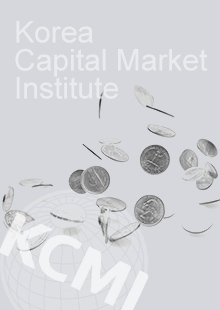Find out more about our latest publications

A Study on Regulation AB and Its Implication for Korean ABS Disclosure
Survey Papers 06-03 Dec. 05, 2006
- Research Topic Capital Markets
- Page 134
- No other publications.
In December 2004, the US Securities and Exchange Commission(SEC) approved the final version of Regulation AB, which provides an extensive set of securities rules and regulations for asset-backed securities(ABS) and mortgage- backed securities(MBS). The final rules reflected numerous changes that have been incorporated to address issues raised in comment letters received by the SEC in response to the initial proposal for ABS registration, disclosure and reporting requirements, released on May 3, 2004. This paper is aimed to take a look at the newly adopted Regulation AB and its implications for Korean ABS disclosure regime.
Regulation AB is the new and amended disclosure requirements for ABS, which are governed by the Securities Act of 1933 and the Securities Exchange Act of 1934. A principal goal for the adoption of Regulation AB was to bring clarity to the regulations applicable to ABS and provide quality disclosure and reporting to investors by consolidating and codifying the existing rules and regulations previously governed by no action letters and new additional requirements.
The main characteristics of Regulation AB are as follows: First, shelf registration will be available to the newly expanded class of ABS. Second, the final rules broaden the definition of ABS to include securities backed by more kinds of assets, including leases. However, synthetic securities and non-performing loans are excluded from the definition of ABS. Third, Regulation AB requires disclosure about specific transaction parties such as originator, servicer and trustee with respect to prior experience, performance and role for ABS transactions involving similar pool assets. Fourth, the regulation requires disclosure about static pool data if needed for the pool performance analysis.
As for Korea, from the beginning the ABS disclosure regime was based on the existing securities disclosure requirements and reflected ABS-specific characteristics. However, since the ABS disclosure regime is focused on transaction structure at the time of issuance, it is difficult for investors to have access to systematic information about post-issuance performance of the underlying pool and so on. For that reason, there is a rising need for enhancing investors' confidence by improving the entire process of ABS registration, disclosure and reporting and the post-issue disclosure on the asset pool's performance.
There are fundamental differences between Korea and the US with respect to the adoption of ABS laws and regulations. In the US, ABS was voluntarily issued under the Securities Act of 1933, the Securities Exchange Act of 1934, and the Trust Act of 1939. Thus, there are no specific laws and regulations for ABS issuance. On the other hand, Korea introduced the legal and regulatory framework for ABS through the enactment of “Asset Securitization Act” in September 1998. Also, there are a comprehensive set of rules and regulations for ABS issuance. As a result, Korea and the US have different legal and regulatory ABS frameworks.
Korea is not much different from the US in light of framework for ABS registration and disclosure. That is because Korea has continued to seek advances in registration and disclosure regimes. The United States used the framework for the existing corporate disclosure, supplemented by no action letters, temporary regulations for the ABS disclosure regime. Recently, it established the ABS-specific disclosure mechanism. On the other hand, Korea adopted the registration and disclosure requirements reflecting ABS characteristics at the beginning of ABS introduction in Korea.
When it comes to ABS disclosure regulations, there are found slight differences between Korea and the US. The US limits the scope of ABS subject to disclosure and adopts shelf disclosure while providing very detailed disclosure requirements. In contrast, Korea defines ABS in broad terms. Korea's basic disclosure requirements are similar to the US'
